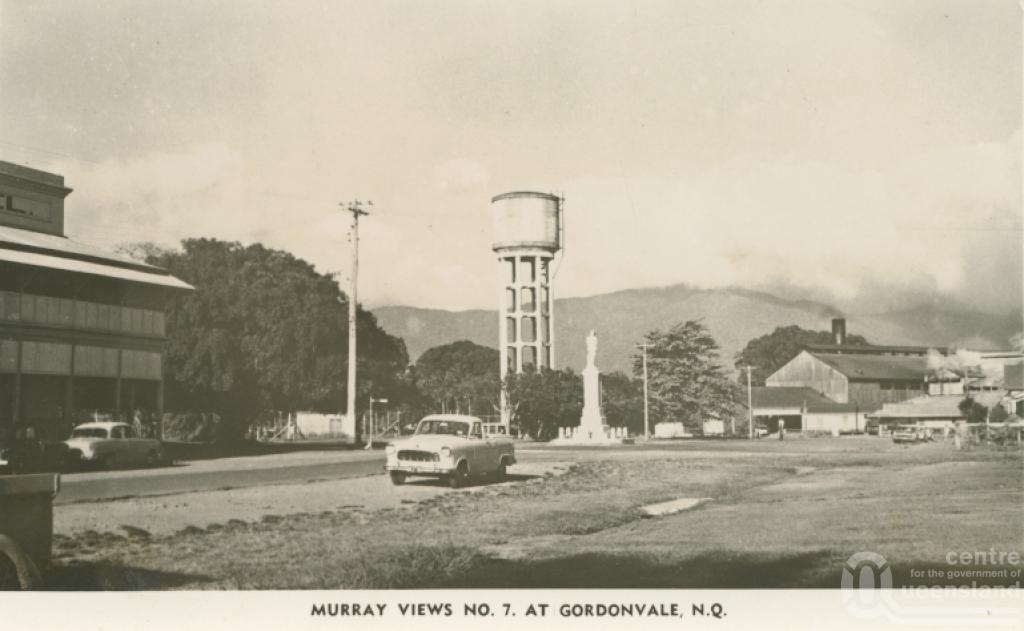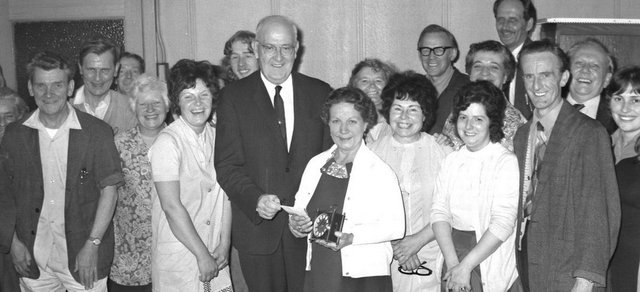A Far Northern Life - Chapter 1
Sugar, Gordonvale and Edmonton
For me life began in the Far North Queensland sugar town of Gordonvale on the 23rd day of April 1967. Gordonvale, situated about 25 kilometres south of Cairns, was a small country town of about 2 000 people. Gordonvale, established on Yidinji tribal land, was initially called Mulgrave and then Nelson. The name Gordonvale was settled on as a tribute to John Gordon, a pioneer in the district who was a butcher, dairyman and grazier and early director of Mulgrave Central Sugar Mill. The town’s most prominent geographical feature is Walsh's Pyramid or Djarragun, as it is known to the Yidinji. A cone shaped peak, rising 922m on the outskirts of the town it resembles a small volcano. In 1967 Gordonvale had a sugar mill, four hotels, a tennis club and a courthouse and one GP, Dr Raymond Davis. Most significantly for me on the day of my birth, Gordonvale had the nearest hospital to the town of Edmonton, where my parents, Tom and Marion lived.

Edmonton, lying halfway between Gordonvale and Cairns, had a smaller population than Gordonvale and a much smaller population than Cairns, with its bustling metropolis of 54 000 people. Edmonton also had a sugar mill and was typical of most country towns of that time. It had two pubs, the Hambledon Hotel and the Grafton Hotel. There was a meatworks on the outskirts, which along with the Hambledon Sugar Mill constituted the main source of employment for Edmontonites. Edmonton also had a sense of community which was a characteristic of most Queensland towns of that era.
On the 23rd of April 1967, Tom Pyne and his heavily pregnant wife Marion, both keen tennis players, were at Norman Park in Gordonvale for a regular fixture. As luck should have it, another keen participant in the tennis was, despite him having just one lung, the aforesaid Dr. Raymond Davis. Not long into the day labour led to a 400-metre trip down Norman Street to the Gordonvale Hospital, where I made my debut appearance. Born as a result of a ‘love match’ I had none the less ruined Doc’s day if tennis, but he did hurriedly return to the court for a few games, which may be why I remained uncircumcised, despite my mother’s request for the snip.
For Tom and Marion, I was the second child, my sister Joann having been born 7 years earlier. Home was 88 Mount Peter Road, the longest road in town. Formerly known as Sawmill Pocket Road, it started at the junction with Mill Road, near the Bruce Highway and ran for a mile before getting where we lived and then curled its way through sugar-cane paddocks, ending in an old goldmine in Mount Peter, in the mountain range behind the township. At the time of my birth the house at no.88 was surrounded by a creek on the north and east and cane paddocks on the south. To the west of our house lived my mother’s parent, Bob O’Connell and May McKinnon, known to my sister and I simply as Grandad Bob and Nana.
I cannot imagine a more carefree or relaxed lifestyle than growing up in Edmonton in the 1970s, surrounded by cane fields and with close access to tracks, trails, creeks and swimming holes. The small population ensured serenity for a young boy adventuring throughout the landscape. A peacefulness interrupted only occasionally by the cane trains during harvest time. The harvest period was known as the ‘crushing season’ when locomotives were loaded to take the sugar cane to the mill where it was crushed. Life was relaxed, and living was easy. When the then leader of the Liberal Party, later to be Prime Minister Malcolm Fraser uttered his most famous words in 1971 that "life was not meant to be easy" it was hard to believe him.
Hambledon Sugar Mill
The sugar industry was not something I thought about a lot growing up yet looking back, the sugar industry influenced everything from our economy to the landscape to many of the personal friendships people formed. By the 1970s the sugar industry was transitioning to green harvesting, but cane fires were still commonplace. In decades past cane was often cut by hand and burning helped to rid the fields of snakes and rats which carried the dreaded Weil’s disease. Many of the cane cutters, who harvested the cane back then were migrants from Italy and the Baltic States.
The burning of sugar cane continued on many farms throughout my childhood and was helpful for harvesters, particularly were fields were rocky or other hazards may have otherwise been hidden from the harvester driver by the weeds and other vegetation known commonly as ‘trash’, thus lessening wear and tear on the harvesters. Despite the absence of cane cutting by hand when I was growing up, old cane knives could still be found in the sheds of most people. I can well remember making a mess of the vegetation along our creek with grandad’s cane knife that easily slipped through any green vegetation.
During the cane fires small particles of ash about ten centimetres long and a centimetre in width would float from the cane fields and blow whichever the way the wind sent them, which was usually towards the nearest houses, much to the distress of women folk of the town who would invariably have to clean after the ash floated through their windows and settled, often on newly swept floors. One of my first childhood memories is of running in the yard trying to catch as many pieces of ash as I could, before they hit the grass, only to have them dissolve in my palm and later returning home with dirty black hands.
In Edmonton the hub of the sugar industry was the Hambledon Mill. It was to the west of the township and along with the mill itself there were many houses for mill stall all owned and paid for by the giant Colonial Sugar Refining Company (CSR). That said it was what the staff made of it, with CSR employees building their own swimming pool and tennis courts to enhance the area. ‘Mill houses’ were occupied by white collar staff such as accountants, chemists and managers.
My parents formed close bonds with several members of the CSR community, to the extent that school vacations often consisted of travelling down the Queensland coast to catch up with former Hambledon Mill employees who had moved to other locations for CSR. This included people like Allan and Carol Hughes who moved to Ingham. Don and Vai Hamilton who moved to Mackay and David and Jill Sanders who moved to Brisbane.
While the CSR mill community consisted of white collar workers, blue collar workers, including labourers, boilermakers, fitters and turners and the like lived in the town proper. I can’t remember any class distinctions or petty snobbery between the two groups, though it no doubt existed in some form. One of my early memories as a small child was working on the ‘mill float’ for our local parade called ‘Fun in The Sun’. It consisted of a flatbed truck with sugar cane woven into circles and decorative patterns.
Going to this area today one finds a water slide type theme park known as SugarWorld and it is hard to recognise much at all. Proving that for most of us, where we grow up is a time in history, every bit as much as it is a geographical location.

*Pic of Hambledon Mill Staff (1974)
Hambledon State School
Hambledon State School was common of many schools throughout Queensland, yet in it’s own way unique. Originally established as Black Fellow Creek Provisional School in 1887 with an enrolment of 23 students, the school was relocated to its present location on Mill Road in 1910 and renamed Hambledon State School. The school’s buildings were high set, which protected them from flooding and the underneath area was a cement base, usable for students during recess. Next to the school was the Principal’s residence that offered affordable accommodation for the Principal and enhanced security for the school, with the Principal providing passive surveillance of the school after-hours. Such common-sense policies were indeed common, prior to the curse of neo-liberalism infecting the nation, with it’s incomprehensible management lingo, asset sales and privatisation.
State schools provided a community hub that brought together children from families throughout the township. State education more broadly was the very machinery of social integration, bringing together children from diverse cultural backgrounds, colour and class to learn and grow together.
The Principal when a started in 1972 was a Mr. Brady who looked very old to me. He can’t have been the Principal for too long, as I was only canned by him once. It would have been thoroughly deserved as people in authority then and later, found me to be at best annoying and at worst, a right little bastard.
Despite my resistance to authority, I think like most problematic children I could tell when someone was sincere and wanted to make a difference and I respected that. One such person was a Mr. Tom Murray.
Grade seven for myself and those of us born in 1967, took place in 1979. Tom Murray would have not been teaching for too long at that point. The Murray family had a cane farm to the north of Edmonton and Tom’s father as also called Tom, as was my father and I don’t regret being named Robert as I reckon it is great for names to skip a generation to avoid confusion.
Tom Murray was the first teacher who I remember sincerely engaging in a two-way dialogue with us as students. I found these discussions interesting and they made me keen to learn.
Tom would also take us camping and on long runs around and through the cane paddocks.
Welcome to Steem Community @robpyne! As a gentle reminder, please keep your master password safe. The best practise is to use your private posting key to login to Steemit when posting; and the private active key for wallet related transactions.
In the New Steemians project, we help new members of steem by education and resteeeming their articles. Get your articles resteemed too for maximum exposure. You can learn more about it here: https://steemit.com/introduceyourself/@gaman/new-steemians-project-launch
Thanks for the wonderful introduction!
Hello dearie..
Welcome to steemit, to interact and get to grow better on steemit, find your niche and be educated on steemit...do well to join us on our Steemschool discord channel using this link https://discord.gg/2F74XX9
Look forward to seeing you there.